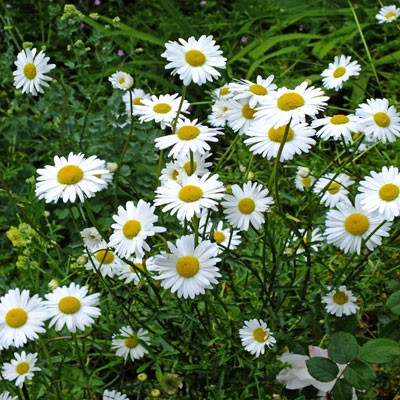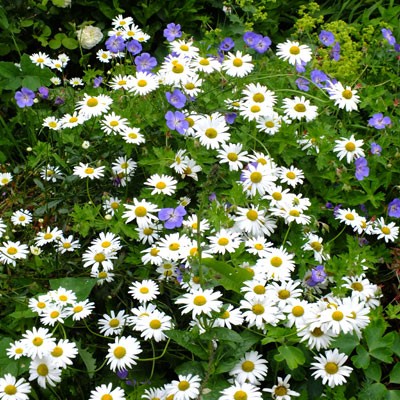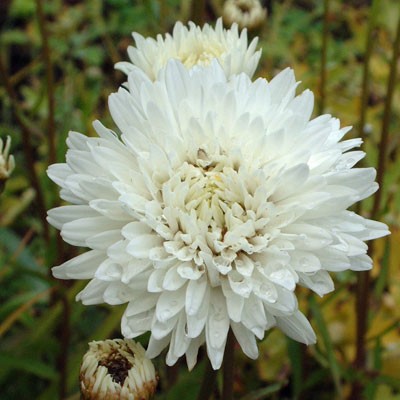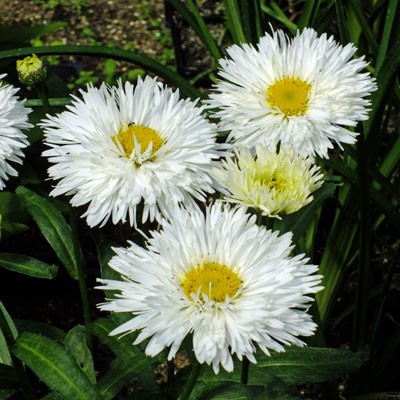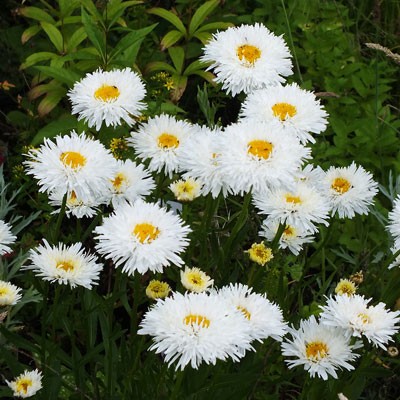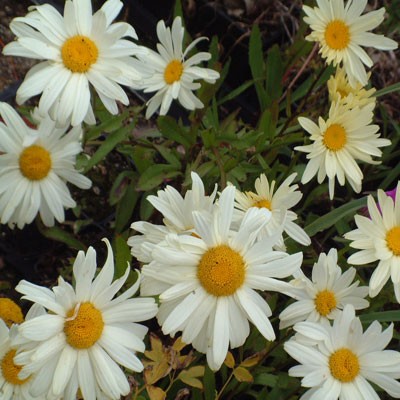Schasta Daisies – Leucanthemum
The Schasta Daisy is the result of the enthusiasm of one man, Luther Burbank (1849-1926). Luther was an amateur plant breeder who turned his childhood passion into a career. The writings of Charles Darwin deeply impressed him as a young boy. He loved the possibility of improving on a natural form with careful breeding and selection.
Luther started his work on potatoes, breeding the Burbank potato – a great improvement on what was available at the time. Having raised enough money from this enterprise he was able to start his own nursery to sell his creations, working subsequently on a large variety of different fruit and vegetables.
Luther stated his nursery in California, Away from his childhood home in New England. To remind him of home he brought with him the native New England Ox-eye Daisy. Then over 6 years he crossed this plant with the English Ox-eye daisy, but never achieved what he was aiming at. However he then came upon a Japanese Daisy which brought just the boost he needed. The combination produced the parent of all the varieties we know today. To honour his new creation he named them in honour of Schasta County in North California and the region’s Mount Schasta.
Schasta daisies are tough reliable and always a joy. Their evergreen leaves spread to produce substantial clumps on a wide variety of soils and they produce flowers reliably. These cut well for the house. In Luther’s own words, they are:
‘graceful enough to please the eye and hardy enough to live in any soil.’
Esther Read
Horace Read was Norfolk Nurseryman. One day, travelling on the train to Great Yarmouth he spotted a semi-double ox-eye daisy in a field. On the return journey he pulled the communication cord and, while the train was stopped, nipped out and dug it up. From this he bred Leucanthemum ‘Esther Read’, naming it for his daughter. It became one of the most popular Schasta daisies ever produced. L.’Horace Read’ was part of a breeding program aimed at curing Esther’s tendency to flower in flushes.

















































